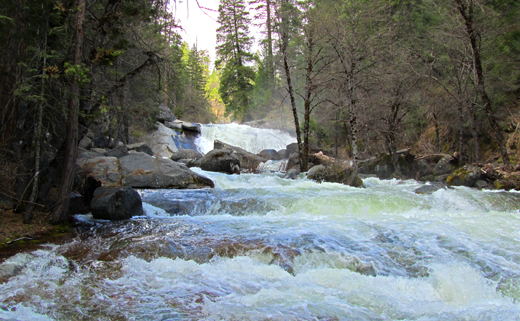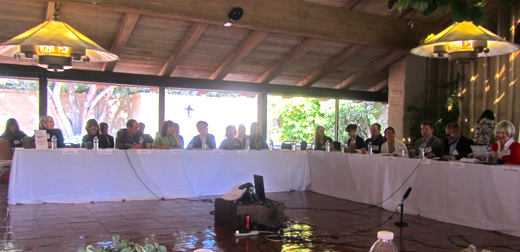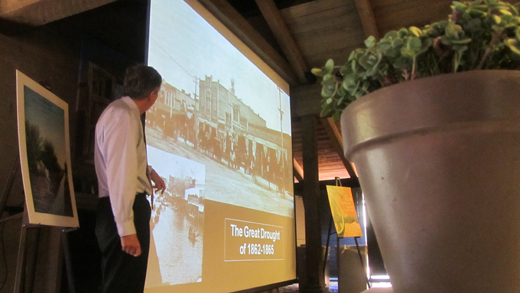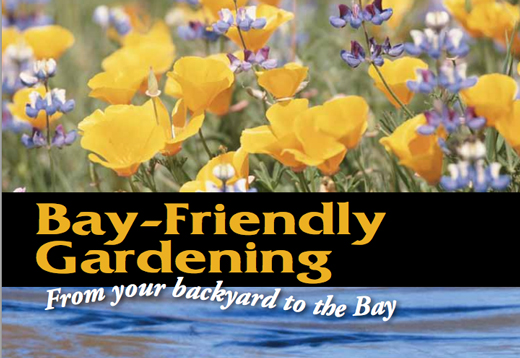Sunset Magazine sparks conversation about the future of water

Sierra Nevada rivers supply water to some parts of California. Shouldn’t we value every drop that comes out of our taps? (Photo of the South Fork of the Tuolumne River in Yosemite National Park by Christine Sculati)
California has endured many droughts as a state and has found ways to innovate in response to each dry spell.
Indeed, the current drought – one of the worst in the state’s history – has sparked new conversations that went silent after the last major drought ended. We all tend to suffer amnesia when a crisis is not staring us in the face. In a time when predictions are for a warming climate and more frequent and severe droughts in the future, water conservation needs to become a way of life, even during periods of heavy rain.
The Future of Water
Amid the deepening drought in California, recently I attended a convening at Sunset in Menlo Park to discuss “The Future of Water” in California and the West. Academics, water district managers, environmental advocates, educators, farmers and landscape experts shared their perspectives on the water crisis and what can be done.
Sunset offers readers tips on travel, food and gardening in the West. Sunset’s monthly magazine, in circulation since 1898, began as a promotional tool for the Southern Pacific Transportation Company with the purpose of combating the negative “Wild West” stereotypes about California. Early writers included John Muir and Jack London.
Today, Sunset’s monthly magazine, books and website reach as many as six million city dwellers and homeowners in Western states, so the direction their coverage takes has the potential to affect water perceptions and use throughout drought-stricken states. During the last major drought in California, from 1988 until 1992, the magazine ran a flurry of articles on water conservation. With a “water-wise design guide” out last fall and a special drought issue planned for June 2014, the magazine is stepping up its coverage of water-saving tips.
What can we do to save water?

From my view, a few themes stood out from the half-day discussion and break-out groups:
- Water Policy: California needs a comprehensive water policy that integrates surface water and groundwater and expands the use of recycled water by water districts and other innovations in water efficiency and conservation.
- Public Education: Educate the public so that everyone understands what is at stake, knows where their water comes from and values their water. Water conservation techniques in the home and fixes to leaks can lead to substantial water savings. And perceptions of what defines a beautiful landscape need to continue to evolve.
- Incentivize Water Conservation: Motivate behavioral changes with real-time meters and pricing that rewards conservation.
How bad is it? What are the issues?
Here are a few of the discussion’s highlights (some comments are condensed and edited for clarity):
B. Lynn Ingram
Professor of Earth and Planetary Science at UC Berkeley
Fortunately the forecasts are for El Niño next year. In the short term we might hopefully get relief. But with global warming and with the effects of that, we may be headed into a somewhat longer, on average, dry period. … This is something we have to start planning for in terms of our water policy and water usage. We already have been experiencing earlier spring, earlier snowmelt and a decrease in snowpack — from warming. And we are seeing increased wildfires. We don’t know how bad it will be or how variable. With warming, some storms will get larger. And we will have more precipitation falling as rain in winter instead of snow.
Barton “Buzz” Thompson
Director of the Stanford Woods Institute for the Environment

What we do know is that we will continue to see serious droughts in California. The first one as a state dates back to 1862-1865. What started with a flood in Sacramento became a drought. We have seen significant droughts since. What we know about climate change is that both droughts and floods will be more common and they will be more extreme. So we not only need to prepare for the drought today but for the drought in the future.
Jennifer Persike
Deputy Executive Director for External Affairs and Operations for Association of California Water Agencies (ACWA)
ACWA represents 440 public water agencies all over the state providing more than 90% of water suppliers.
This drought is having a profound effect in Northern California and especially in hard hit areas like the Sacramento region and the Central Coast. Water agencies in the Sacramento region are very dependent on the federal Folsom reservoir, which is so dry that people are walking across the reservoir in places that would normally be 100 feet under water. Our water agencies are mobilizing all over the state. Because different agencies have different sources of water, there is no one-size-fits-all situation in this drought. Some have multiple sources of water. Some rely on local sources only or groundwater. Public education is being stepped up on all fronts. Our polling shows that if the public understands the issue and can help with the solutions personally they will be there to support you. We launched program Save Our Water, now in its fifth year, to educate the consumer. We have resources for the consumer. How much water do you need for your landscape? How do you use your irrigation controller? Now is not a great time to start a drought tolerant garden because it still takes water to get the plants established.
Lance Walheim
Citrus Grower, Central Valley and Sunset Contributor
I am a small farmer. I grow specialty citrus on the east side of the Central Valley, where the situation is very different from the west side, where they don’t have the groundwater resources we have and the situation is much worse. I’m going to have to rely on groundwater. I use micro sprinklers. I can’t grow the quality of citrus that we are used to growing on the water that we have. This crisis will affect the small farmers more than it will affect the big farmers in some instances. Some farmers on the east side of the Central Valley will also have to let fields go dry with wells collapsing. I hope we can get through the summer. I’m losing a lot of sleep over it. A lot of us know that this is a long range thing we are going to have to deal with because there is just not enough water to go around.
Jill Giacomini Basch
Owner of Point Reyes Farmstead Cheese Company
We have owned a family farm in Point Reyes in West Marin since 1959 and diversified our operations in 2002 to make artisan cheese. Marin and Sonoma County farmers rely on pasture grazing and growing their own feed to be less reliant on transporting feed from the Central Valley. The dairies in the area are in a dire situation. Prices will rise because of decreased supplies. Even with the rains in February, some dairies, since January, have been hauling water to their farms to the tune of about $600 per 3,000 gallons. The economics are not going to play out for these small dairy farms to survive. Ten years ago my family started new water allocation methods by increasing aboveground water storage and expanding our well system. We also entered into the area of agri-tourism to get in front of consumers and invite them to get closer to their food source.
Brian Stranko
California Water Program Director at The Nature Conservancy
If you are a fish you live in water so this big deal. It’s also a big deal for migratory birds, amphibians and desert animals. There’s not much water to go around. Instead of focusing on the near term crisis we are hopeful that we can use this drought as a wake up call for all of us to think about longer term solutions so that when we get to the next drought we are more prepared than we were today.
Tracy Quinn
Policy Analyst for the Natural Resources Defense Council
We don’t have to worry just about this drought. With climate change we are likely to see more intense and frequent droughts and we need to prepare long term strategies. There are many opportunities for us to save water here in California – both through behavioral changes and improvements in technology. What worries us most is that we are not making the most use of the water that we have.
Amy McNulty
Water Efficiency Supervisor at Irvine Ranch Water District
We implemented a new rate structure back in 1991. We saw a 50% reduction in water use simply by informing our customers on how much water they should be using. We have five tiers for residential customers including a low volume discounted tier. Each customer has a per person per day budget. Our customers believe in a fair and equitable rate structure so we have a very high customer satisfaction rating. The top two tiers fund conservation programs – for rebates, turf renewal programs and capital projects dedicated to conservation.
Maureen Decombe
Bay-Friendly Landscaping and Gardening Coalition
For behavior change you need a real feedback loop. The ability to meter water after our water use would be fantastic. From 30 to up to 70 percent of residential water use is for outdoor use. Water runs down street, picks up pollutants and goes to the Bay or your local watershed. A real time feedback loop would be magical. I don’t know how that would happen. Rebates for dedicated water meters could be a good start.
Rita Schmidt Sudman
Executive Director of the Water Education Foundation
For us, the drought is the teachable moment. It’s the opportunity to talk to your friends and neighbors and get on TV and radio. Generally our water is very affordable. Cheap in some cases. We need to talk about how we structure water rates. We also need to educate people on the concept of watersheds. We should be teaching kids in school to understand the journey of water to their tap. Does it come from the Sierra? From the Colorado River? This education really helps people. Anything that can educate people will motivate them.
John Coleman
President of the Association of California Water Agencies and Board Member for the East Bay Municipal Utility District (EBMUD)
EBMUD’s Water Smart program was a pilot for 1,000 homes and we are ramping up the program for 100,000 homes within three years. The program allows customers to go online and look at their water situations. If there is a leak, we can inform the customer, by email or a phone call, if we see a spike in usage.
Stuart Rickard
Principal of BAU Bay Area Urban Development and Bay- Friendly Landscaping and Gardening Coalition
We want our gardens to be green all year. This needs to evolve. Native plants also help wildlife in tough times like this when they need more energy. There are techniques to save water and convert lawns and change our gardens to habitat gardens. People waste water because it’s inexpensive. In some cases it is cheaper to waste water than to hire a landscaper to fix a broken irrigation system. It is also important to communicate in ways that are accessible to the public. People don’t act when they don’t know what to do. Let’s use this drought as an opportunity to see what is possible.
Download the Bay-Friendly Gardening guide by clicking the image:


